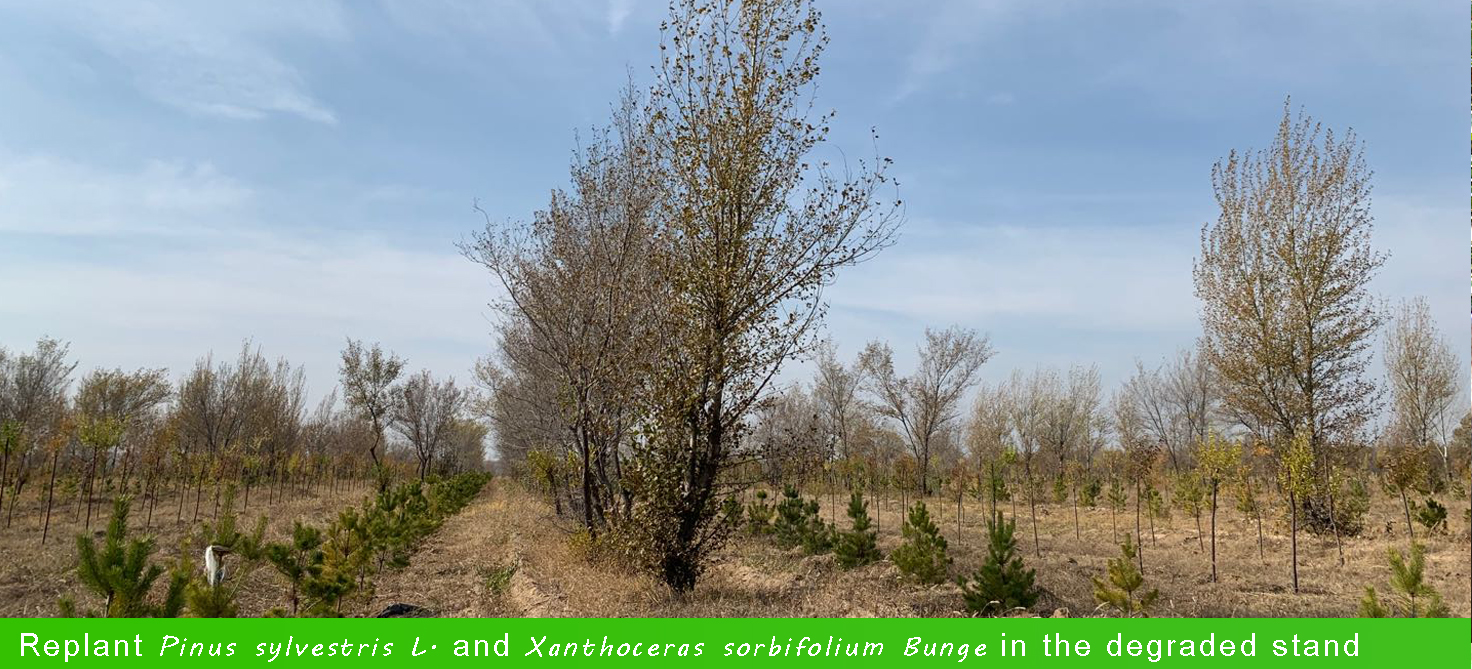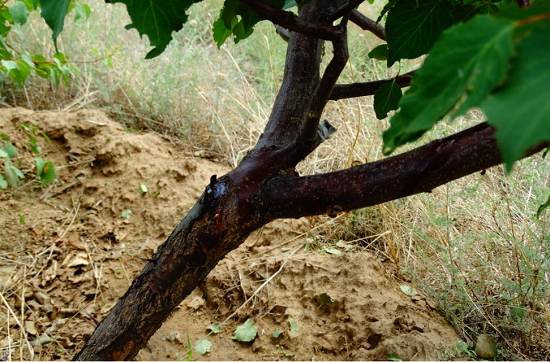Demonstration of vegetation restoration and management and utilization of forest resources in the Greater Central Asia
Project title: Demonstration of vegetation restoration and management and utilization of forest resources in the Greater Central Asia[2016P3-INM]
Supervisory agency: Chifeng Forest Bureau, China
Executing agency: Sanyijing State-owned Forest Farm, Aohan Banner, Chifeng, Inner Mongolia, China
Budget in USD (total / APFNet grant): 744,000 / 500,000
Kick-off date & duration: April 2017, 36 months, on track
Site Location: Sanyijing Forest Farm, Chifeng City, Inner Mongolia, China
Objectives: To promote regional vegetation recovery and improve the sustainable management of forest resources through demonstration of desertification control, vegetation restoration and development of sand industry.
Expected outputs: A research report of desertification prevention and control in Chifeng will be formulated; A 70 hm2 demonstration site for forest restoration on sandy area will be established; A 13 hm2 demonstration site for grafting Armeniaca sibirica (L.) Lam with Armeniaca vulgaris sibirica, 18hm2 demonstration site for Armeniaca sibirica (L.) Lam fertility management and 8hm2 demonstration site for Armeniaca vulgaris sibirica fertility management (including the soil preparation, pruning, fertilizing, watering, weeding, pest control and fire prevention) will be established; Capacity of forest station staff in desertification control and forest rehabilitation will be enhanced.
Project background
Aohanqi, a typical region negatively affected by desertification, is a focal area for desertification prevention and control efforts in China. Measures applied here can often be used in other regions in Greater Central Asia facing similar problems.
From 2017 to 2019, APFNet, in cooperation with the Sanyijing State-Owned Forest Farm in Aohanqi (also known as Aohan Banner), Inner Mongolia, has conducted two phases of demonstration project addressing these issues.
In greening the sandy land, the projects summarized typical models for desertification prevention and control in Chifeng and provided a theoretical basis and practical examples for Greater Central Asia. It also demonstrated high-quality vegetation restoration in sandy lands and different afforestation models, showcased a selection of economic tree species suiting local conditions to improve forest stand quality and multi-functional benefits of forests, and demonstrated the combination of economic and medicinal species with timber tree species to diversify local income sources.
Project featured topics
Greening the sandy land with forest rehabilitation models

Fig.1 The photos show the mixed plantation of Pinus sylvestris var.mongolica Litv. with Populus alba var. pyramidalis Bunge before(left), in 2017(mid.) and 2019(right).
Improving capacities of sandy land economic value
Model I: Demonstrate wild apricot trees with high-yield management
Wild apricot trees play a good role in wind break, sand fixation and soil and water, with scientific management of soil, tree body management, tending, pest and disaster control,
the fruit setting rate is increased.
The added output value is 12.02 kg/mu, and if the average price of wild apricot kernel is 6 yuan/kg, after deducting the input cost, the annual unit income increases by 22 yuan, and the income form the demonstration forest increases by about 5,940 yuan.
Fig.2 The photos show the wild apricot trees with high-yield management in 2017(left), 2018(mid.) and 2019(right).
Model II: Demonstrate Prunus Armenia with high-yield management
The series technology of Prunus Armenia demonstration for high-yield management are applied, including soil, fertilizer and water management, tree body management, and disaster prevention and control technologies.
The expected benefits analysis of the demonstration is as follows: the average plant yield reaches 1.3 kg, calculating at 84 plants per mu, the total is 111.6 kg. If at the market price of 14 yuan / kg, the unit benefit is 1,562.4 yuan/mu, thus the annual increase income from the demonstration is RMB 187,000.
Fig.3 The photos show the wild apricot trees with high-yield management in 2017(left), 2018(mid.) and 2019(right).
Demonstration of Prunus armeniaca grafting on wild apricot
Since the flowering period of Prunus armeniaca is 5 days later than that of wild apricots, Prunus armeniaca grafting on wild apricot can improve the quality and the fruit setting rate can increase by 2.41 times. The graft survival rate is more than 95%.
Economic Value:The expected benefits analysis of the demonstration is as follows: the average plant yield reaches 1.3 kg, calculating at 50 plants per mu, the total is 65 kg. If at the market price of 14 yuan / kg, the unit benefit is 910 yuan/mu, thus the annual increase income from the demonstration is RMB 177,000.
Figure 4 The photo shows the Prunus armeniaca grafting on wild apricot.
Understory medical herb and perennial flowers plantation
Through growing medical herb and perennial flowers under the Mongolian pines (1.33 ha),the expected income can be 75,000 to 100,000 yuan per ha annually.
Fig.5 The photo shows the demonstration of understory plantation of perennial flowers.





